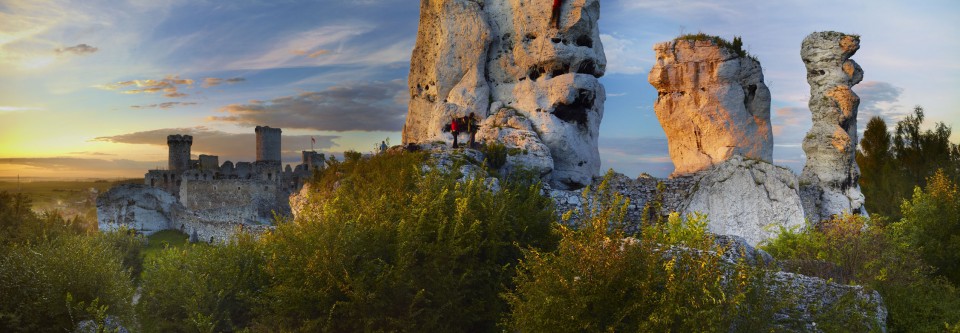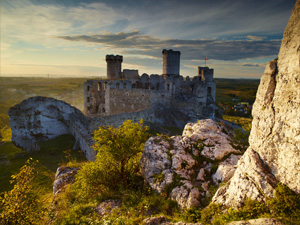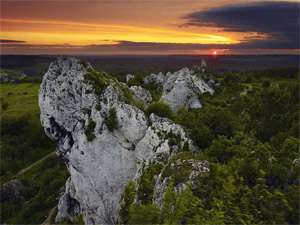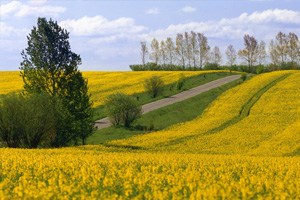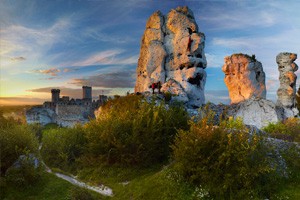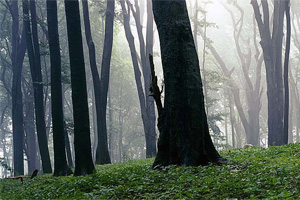Jurassic Rocks Region (Jura Krakowsko-Częstochowska) also known as Kraków-Czestochowa Upland is a great place for tourists. Jura can be explored by foot, bike or car.
The distinctive, one of a kind picturesque landscape is a great place for rock climbers and experienced cave explorers .A season for tourism stretches here mainly from spring to autumn, but also in winter you can spend here enjoyable time skiing or cross-country skiing.
Jura is one of the most beautiful regions of Poland extending over a length of 160 km from Częstochowa to Kraków. Its name refers to the Alpine band on the border between France and Switzerland, where the limestone rocks were first described. The forming of the rocks was assigned to the middle period of the Mesozoic era known as the Jura. Hence the name of the Jura is interchangeably used to the Krakow-Czestochowa Upland.
Natural landscape complement the work of human hands - a picturesque strongholds called Eagle Nests - castles and watchtowers that were built on hilltops and served the defense of the border areas at the beginning of the second millennium of our age. To this day they are preserved in the form of ruins, some have been restored and rebuilt and in addition to natural creations of nature they are undoubtedly the main attraction of Jura.
Jura is one of the biggest aggregations of caves in Poland. They were formed by the gradual erosion of the limestone.
Jura is a unique natural region. You can meet there various elements of nature appearing almost side by side. On a relatively small area live vegetation clusters with extremely different ecological requirements and origin. Due to the very diverse landscape Jura is known from its very rich flora and fauna.
At the Kraków-Częstochowa Upland, influenced by the oceanic climate, dominate heat-loving plants characteristic for Western Europe. In Jura there were found around 1600 species of vascular plants, representing 60%the total number of species of plants in Poland. The forest communities are mainly broadleaved, mixed pine-oak forests with an admixture of beech and fir or oak bright.
The world of animals is also very well presented in Jura. There are elks that inhabit Puszcza Dulowska as well as beavers. 17 species of bats living in Jurassic caves are definitely worth mentioning.
Równie bogato przedstawia się świat zwierząt.Spośród ssaków można spotkać tu łosie, zamieszkujące Puszczę Dulowską, czy bobry. Na szczególną uwagę zasługują nietoperze, których na Wyżynie Krakowsko-Częstochowskiej żyje 17 gatunków.
Autor zdjęć P. Tomasz Gębuś





